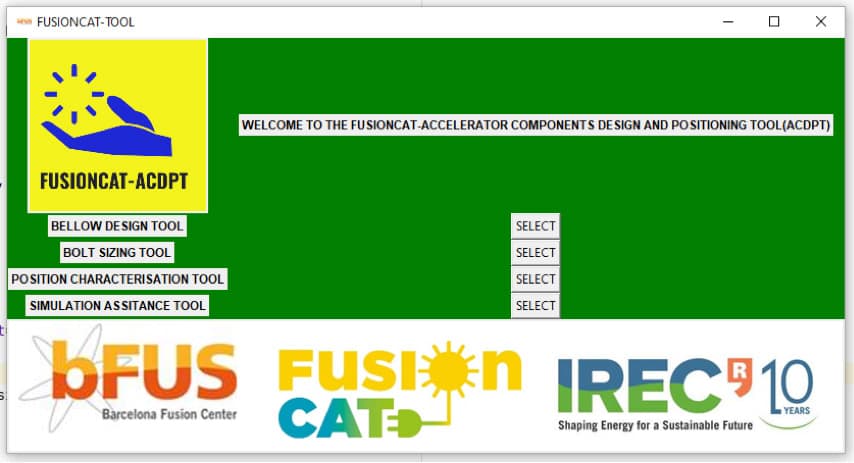Few technologies have the potential to meet the growing energy demand through sustainable, safe and low emission energy sources. Nuclear fusion is one of them. Motivated by these scientific and technological challenges, the community of Catalan entities working on nuclear fusion technology gathers its efforts in the research project FusionCAT (001-P-001722). The project is co-financed 50% by European Union FEDER funds within the ERDF Operational Program of Catalonia 2014-2020 framework and has the support of the Generalitat de Catalunya.
The qualification of neutron resistant materials requires an intense source that generates them with the same energy as those produced in fusion plasma. IFMIF would be the optimal source of neutrons. However, it has been decided to use an early neutron source (IFMIF-DONES) so they can be qualified before the construction of the DEMO reactor. Modelling, analysis and design of these accelerator components are key aspects for a successful implementation.
In this context and within the FusionCAT Project framework, IREC’s fusion group (bFUS) leads the P3 project: Fusion Reactor Studies. In particular, IREC’s bFUS team focuses its research on Task 3.2: Modelling, analysis and design of accelerator components for fusion materials research facilities in collaboration with Eurecat.
The bFUS group has carried out multiple relevant activities in the nuclear fusion field since 2011, such as the design and coordination of the HEBT line activities for IFMIF-DONES, thermomechanical studies for the IFMIF-LIPAc accelerator and technical assistance for the ITER cryogenic systems.
Within the framework of the project, Subtask 1: Lessons learned from IFMIF-LIPAc aims to collect and review the lessons learned during the IFMIF-LIPAc accelerator components commissioning campaign in Rokkasho (Japan). This comparative evaluation of the functional and technical requirements of the accelerator components is essential for the proper design, validation and optimization of the future IFMIF-DONES accelerator.
A consultation with several project partners will be held to collect these data. Special attention will be given to the HEBT system (High Energy Beam Transport line) and Beam Dump, where IREC and CIEMAT have contributed, but also to a future extension of the study and revision to other systems of the facility. Currently, the implementation of LIPAc is still ongoing and therefore, the extracted data will be updated after the completion of the activities.
On the other hand, Subtask 2: Studies of mechanical integration of IFMIF DONES accelerator components, aims at developing a tool to validate the mechanical integration of the different components that are present in the line. The required standards will be applied, with the demanded precision and the usual manufacturing tolerances reached as input data. In addition to the integration validation, the results of this tool could provide a first approach to the required alignment flexibility in each component of the acceleration lines.

Figure 3. Screen shot of the ACDPT tool under development for the integration of accelerators’ components
Besides the aforementioned approach and objectives, both project tasks need to be aligned with the international fusion strategy, specifically with the Eurofusion WPENS work program and the phased strategy towards a neutron source within the European nuclear fusion program.



